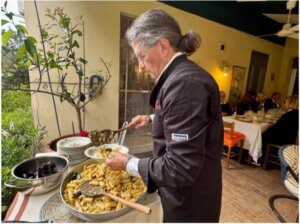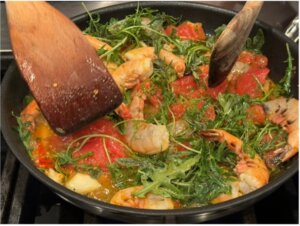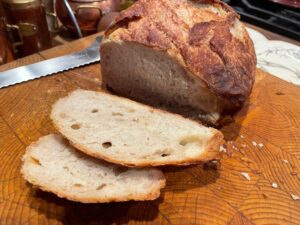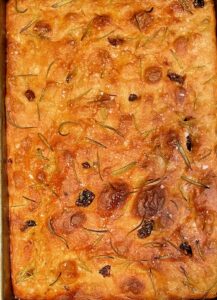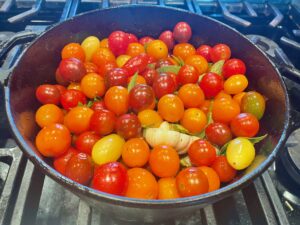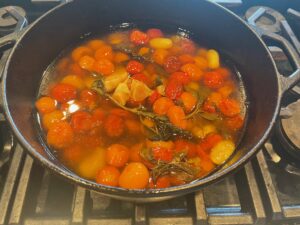This is my preferred abbacchio dish, which consists of the cooked organs of the milk-fed lamb, or abbacchio. It includes the liver, heart, spleen, and lungs. If you are in Rome go to Sora Lella, one of the remaining old, real Roman restaurants located in a beautiful old house/tower in the middle of the city in the Isola Tiberina, the only restaurant on this tiny island. It’s a15 minute walk from Saint Peter’s piazza. If you go there, order this fantastic dish. They taught me how to make it.
Ingredients
- 3 large “Roman” Artichokes
- 3 red onions, cut in thin slices
- Vinegar [what kind and how much]
- Fresh squeezed lemon juice [how much?]
- 1 clove of garlic, peeled and smashed
- 2 bay leaves
- 1 sprig of rosemary
- 3 leaves of sage
- 1 and 1/3 cups (314 ml) of extra virgin olive oil, evenly divided into 2/3 cups (175 ml) and 2/3 cups (175 ml) for different parts of the cooking process
- 1 -2 chopped Calabrian red peppers
- 1 cup of white wine
- Salt and pepper to taste
Preparation
- Put the coratella in a bowl with water and some vinegar [HOW MUCH VINEGAR].
- Soak the coratella for about 30 minutes. Rinse the coratella well.
- While the coratella is soaking with the water and vinegar, clean the artichokes, then cut each artichoke in 8 pieces. Put the cut artichokes in a large bowl with water and lemon juice for 20 minutes.
- Chop the rinsed coratella in small pieces and separate into two bowls; the liver pieces should be in a different bowl than the other organs. The liver is kept separate from the other organs because it cooks more rapidly.
- Put the 2/3 cup of olive oil into a medium-sized saucepan on high heat. Add 1 smashed clove of garlic and the artichoke pieces. Once the artichoke pieces take a nice gold color on all sides (about 5 minutes), lower the heat and add 1 cup of hot water. Cook for another 10 minutes on low.
- In a non-stick skillet on medium heat, add olive oil (about 2/3 of a cup) and the onion slices. Simmer for 2 to3 minutes. Add the herbs and the chopped lungs (these are not available in the US) and partially cover, simmering for another 10 minutes.
- After 10 minutes, raise the heat to medium-low and add the chopped heart and spleen, the chopped Calabrian pepper, salt, and a glass of white wine. Continue to simmer partially covered for about 8 minutes. Add the liver, then use a slotted spoon [or do you include the 2/3 cup olive oil used to cook the artichokes] to add the artichokes from the other pan. If it looks dry—it should not— add some water. Mix well and cook partially covered on medium heat for 5 more minutes.
- Add a little more olive oil, taste for hot pepper and salt and add more if you like.
- Serve this to your guests while it’s still hot.

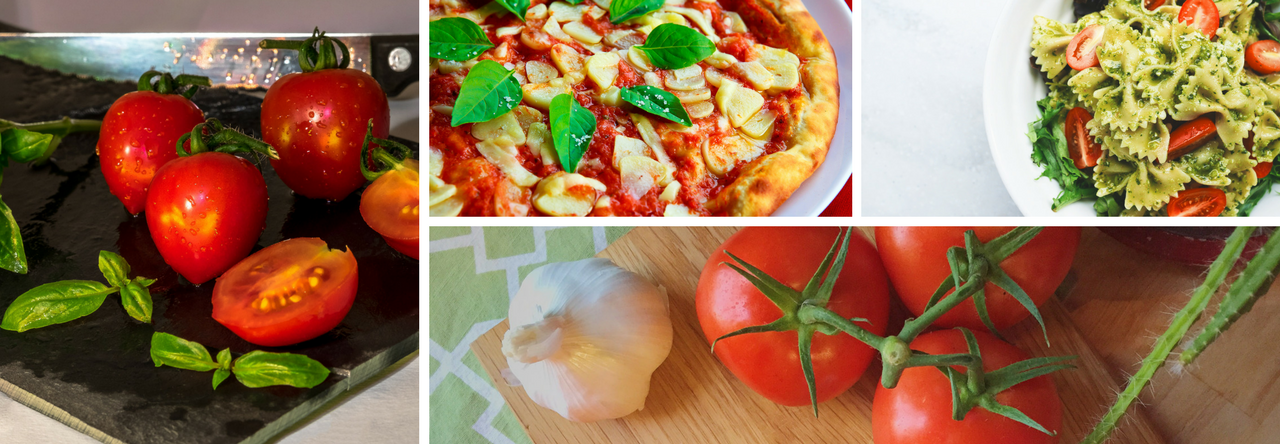
 5 minutes) for the Bramata. For the instant polenta, after 8 minutes it is done, no matter what.
5 minutes) for the Bramata. For the instant polenta, after 8 minutes it is done, no matter what.